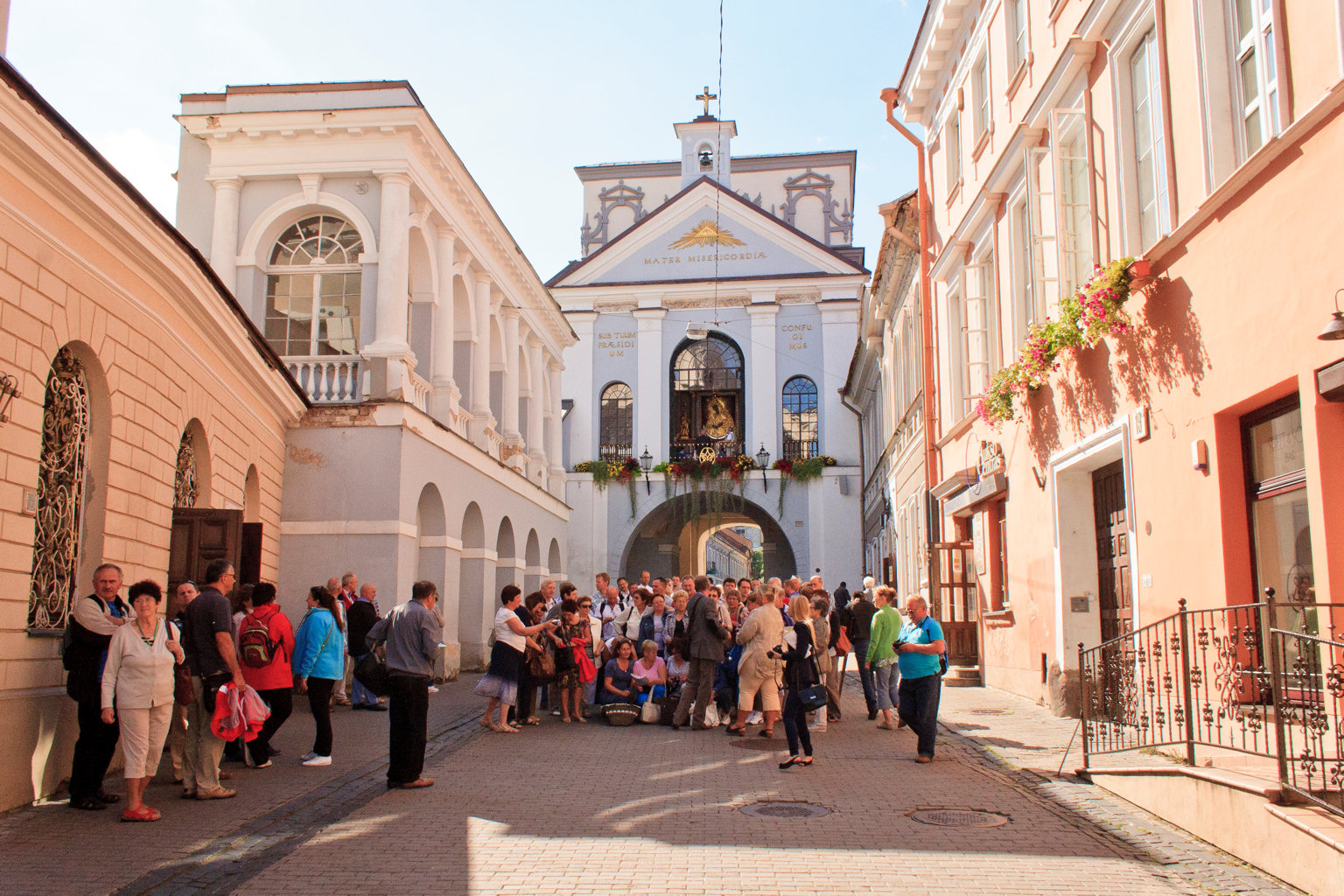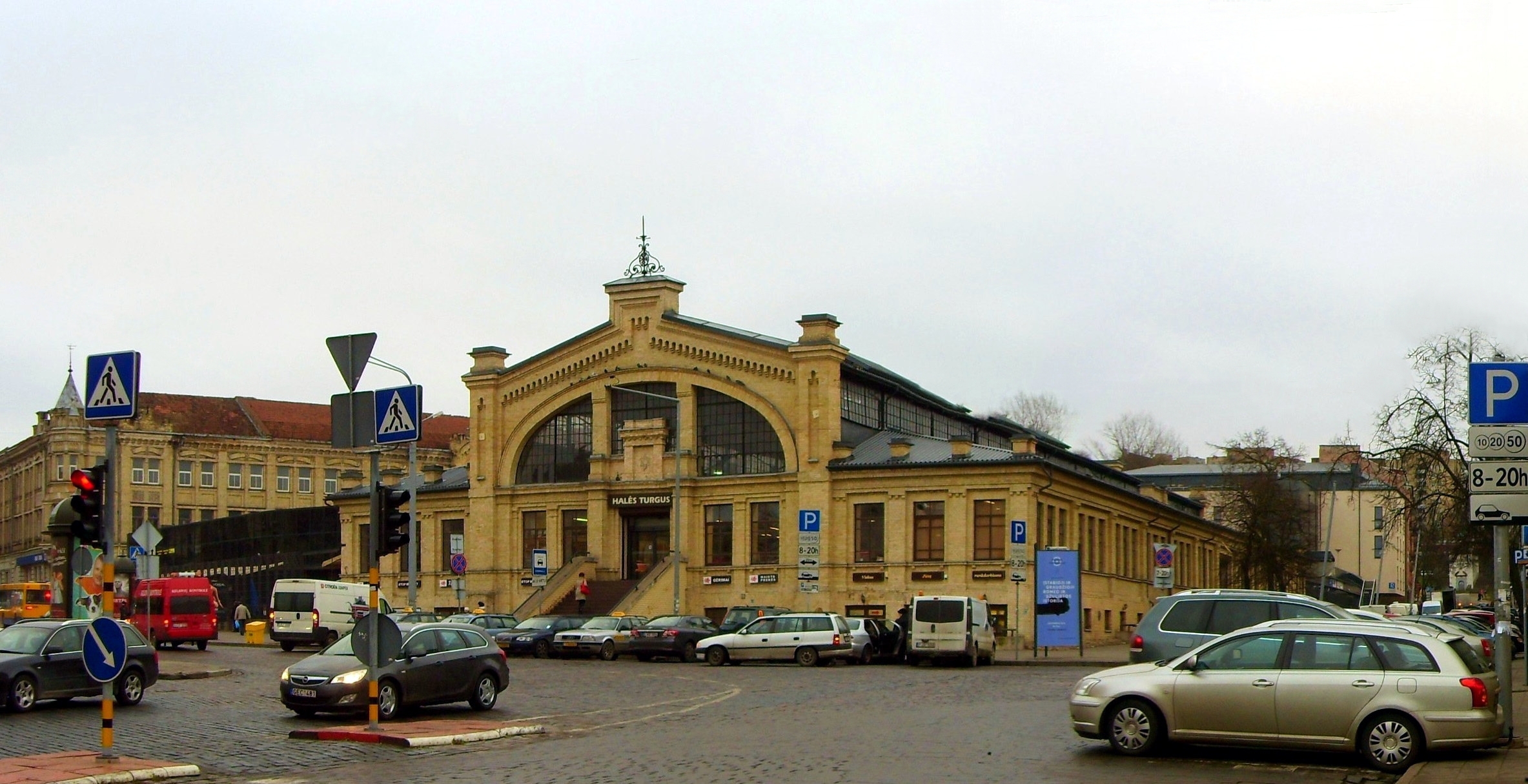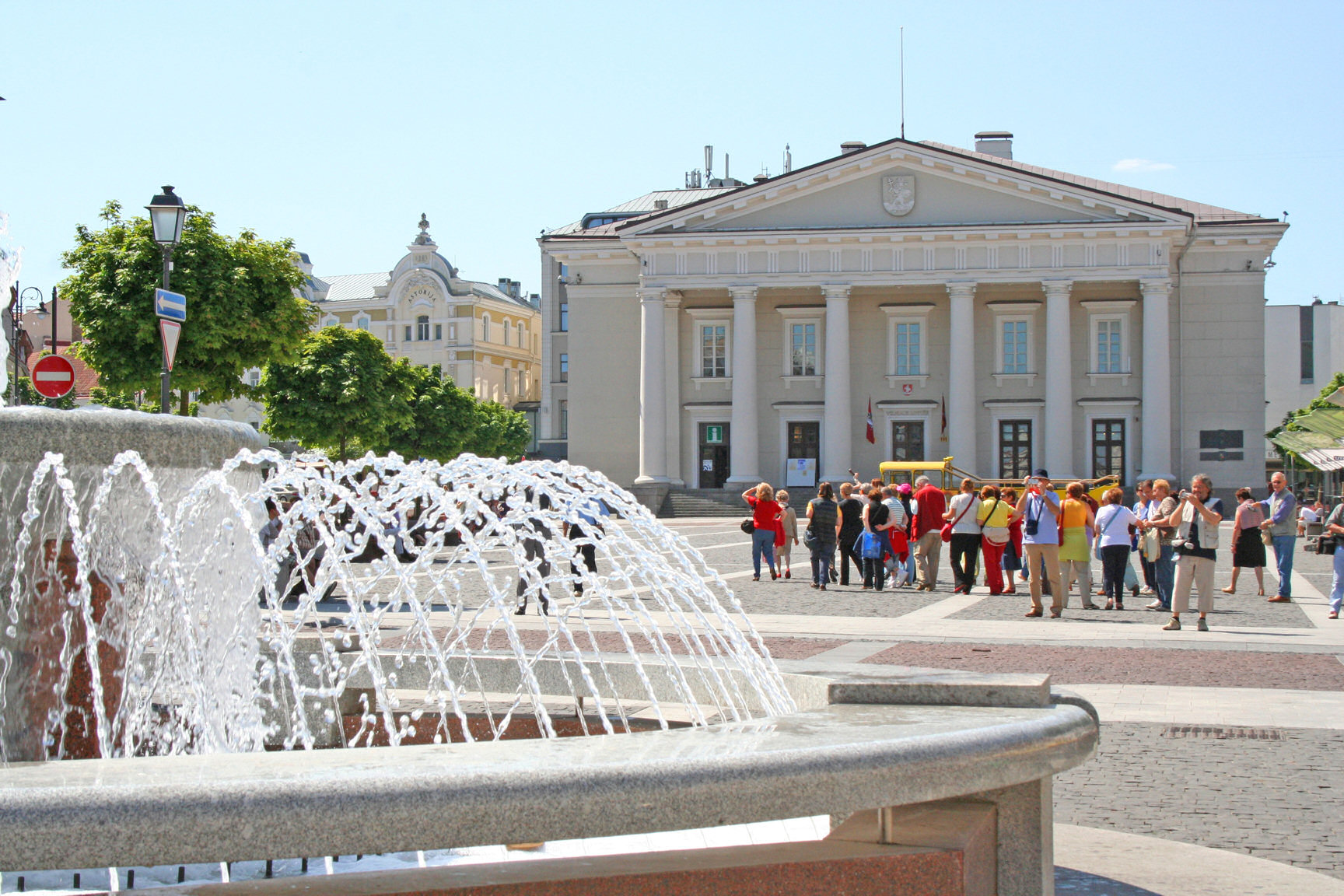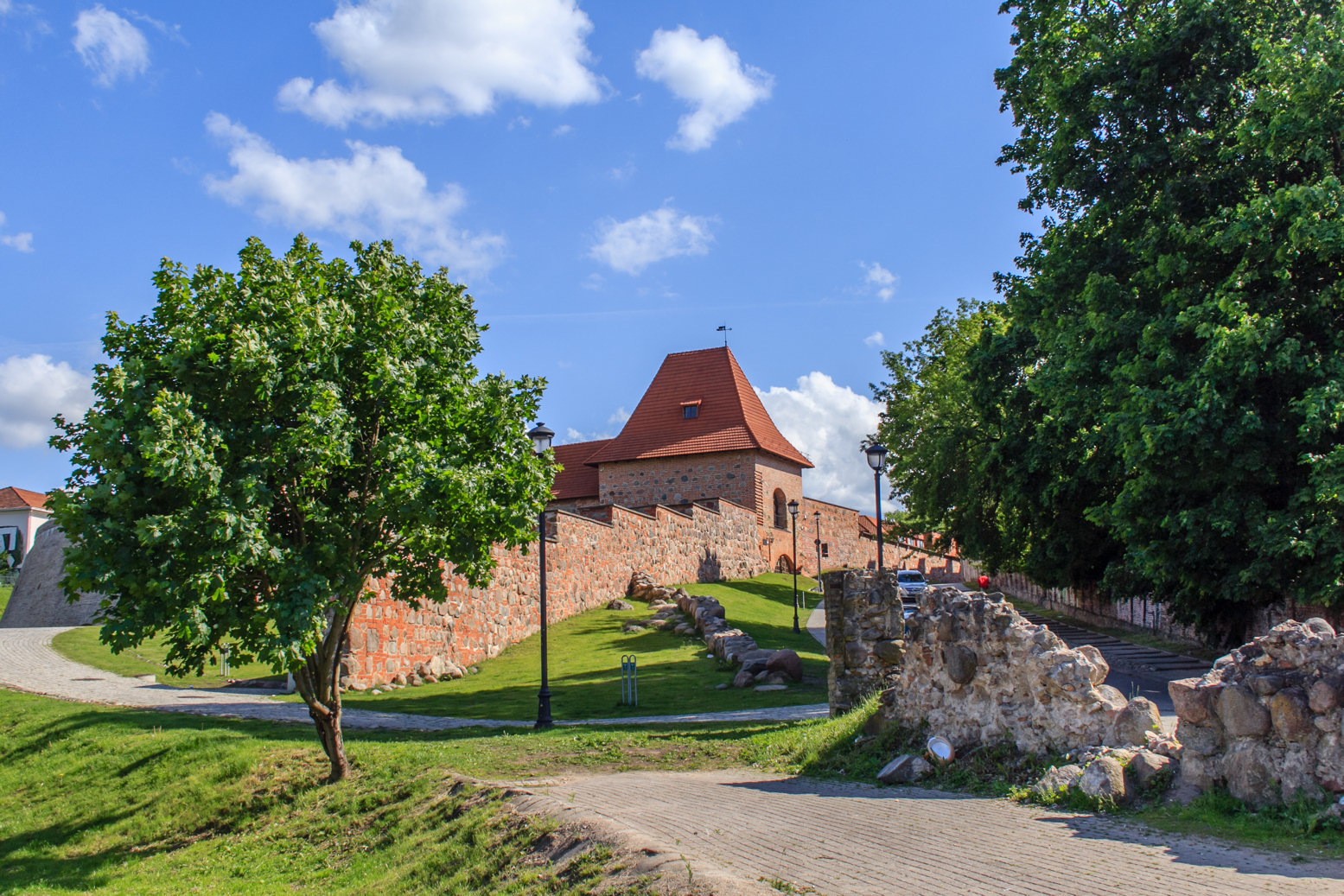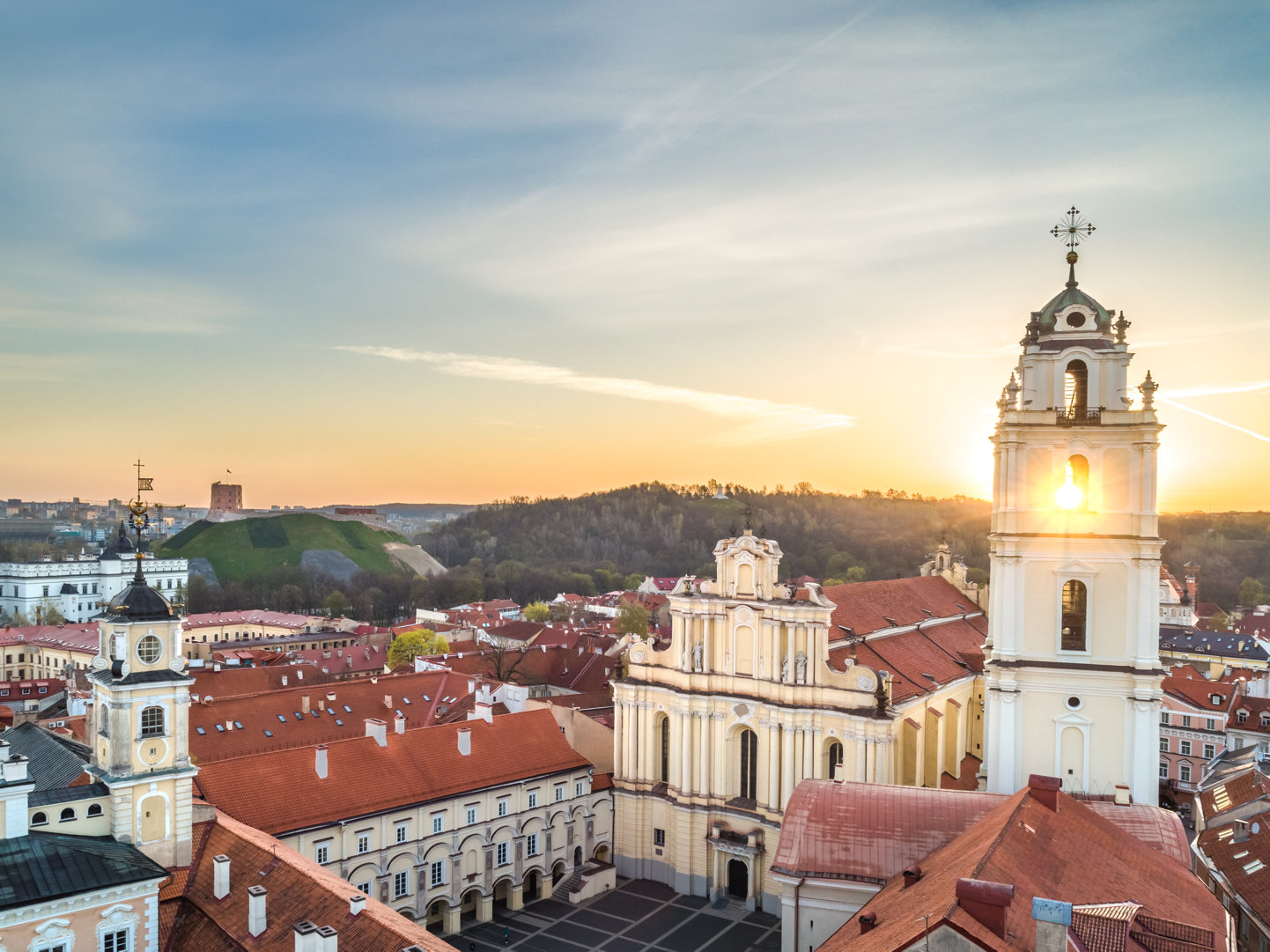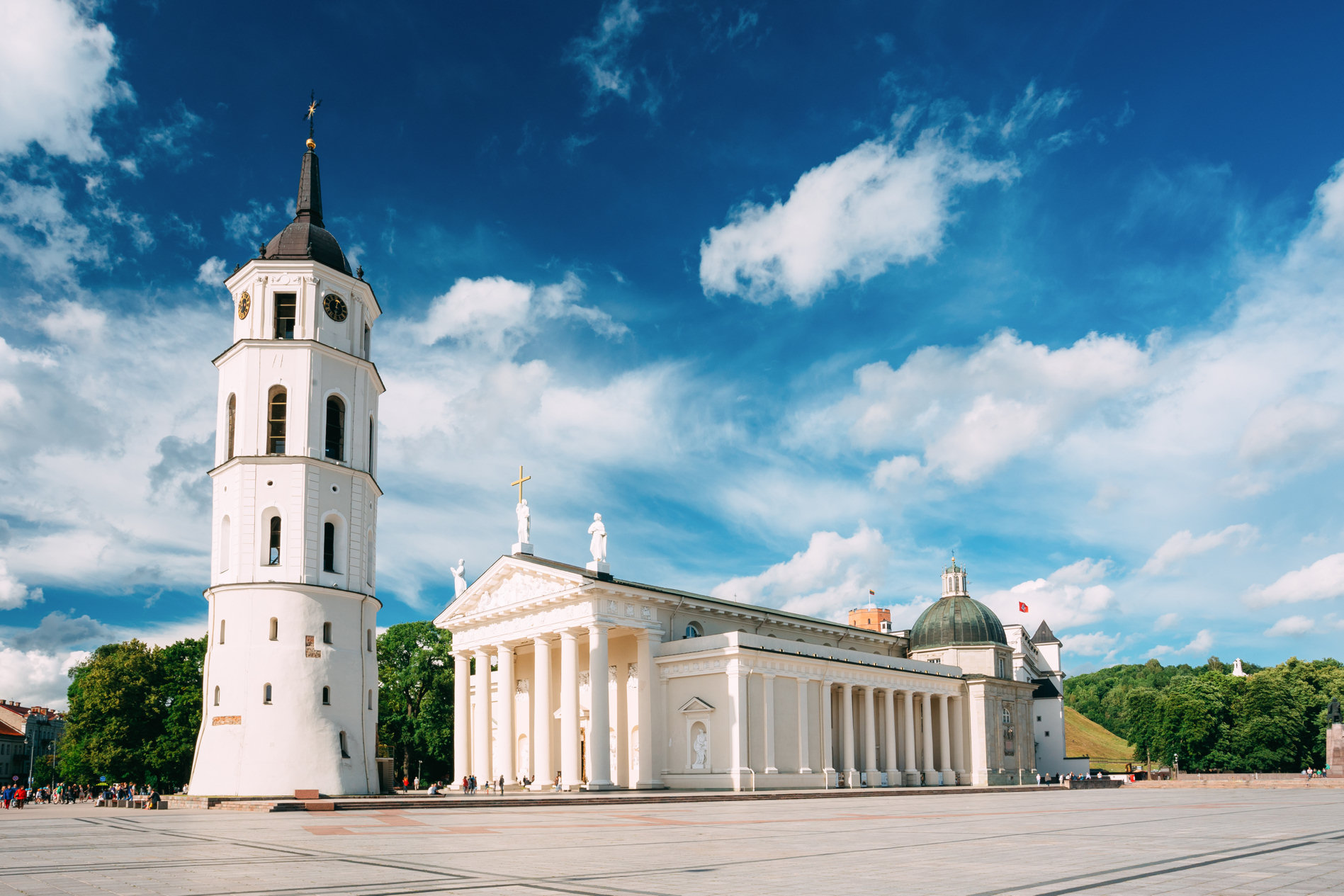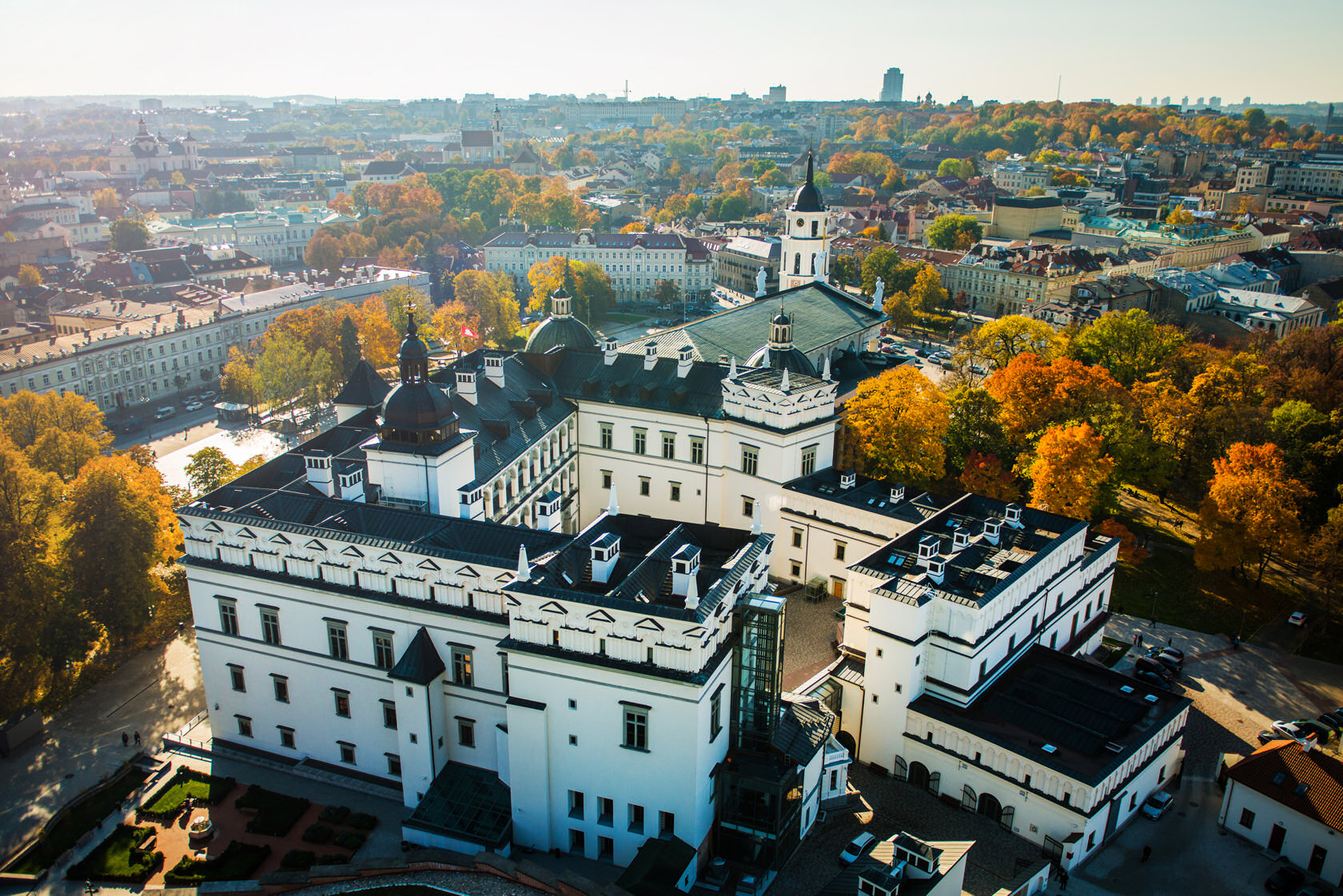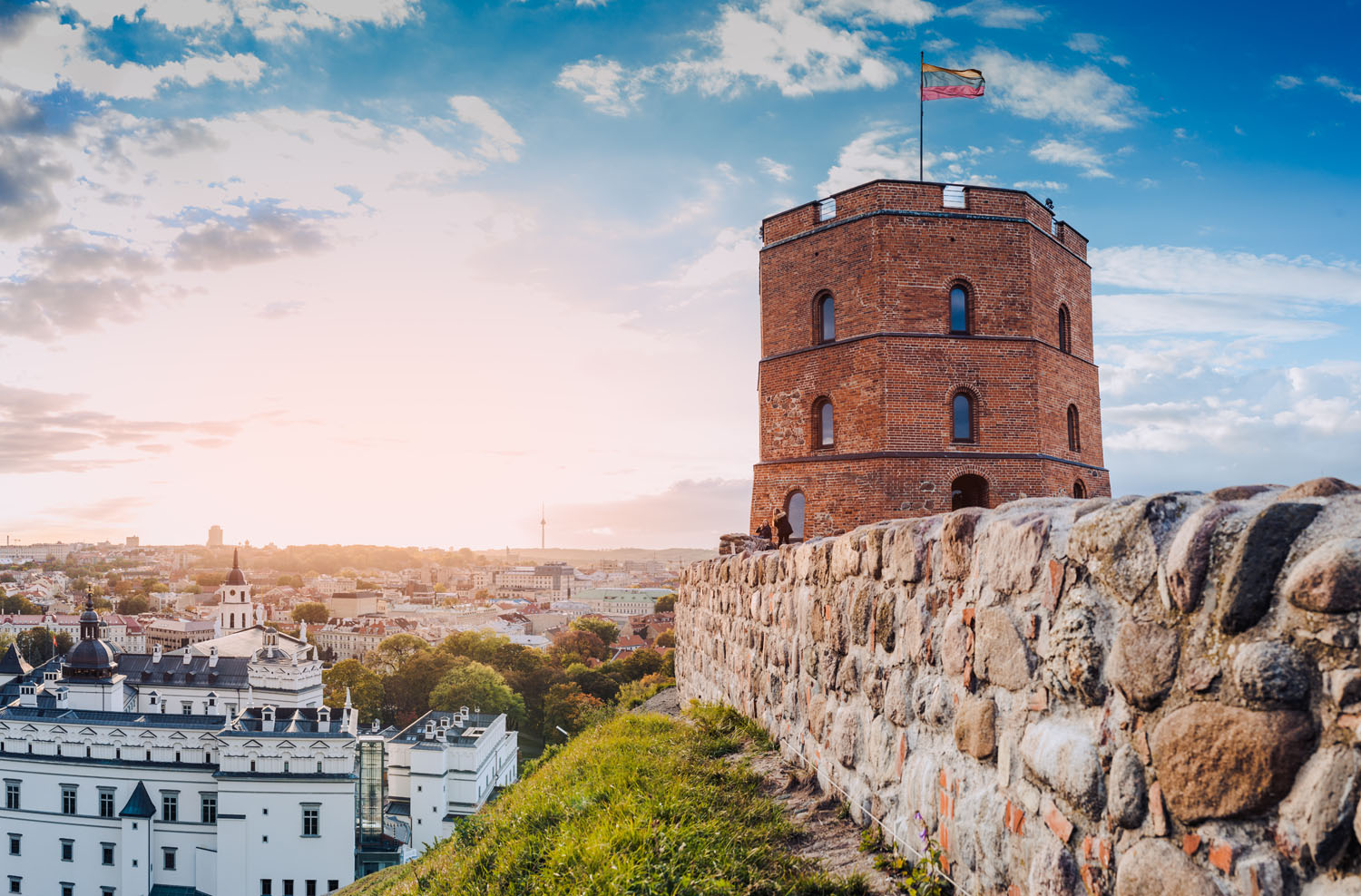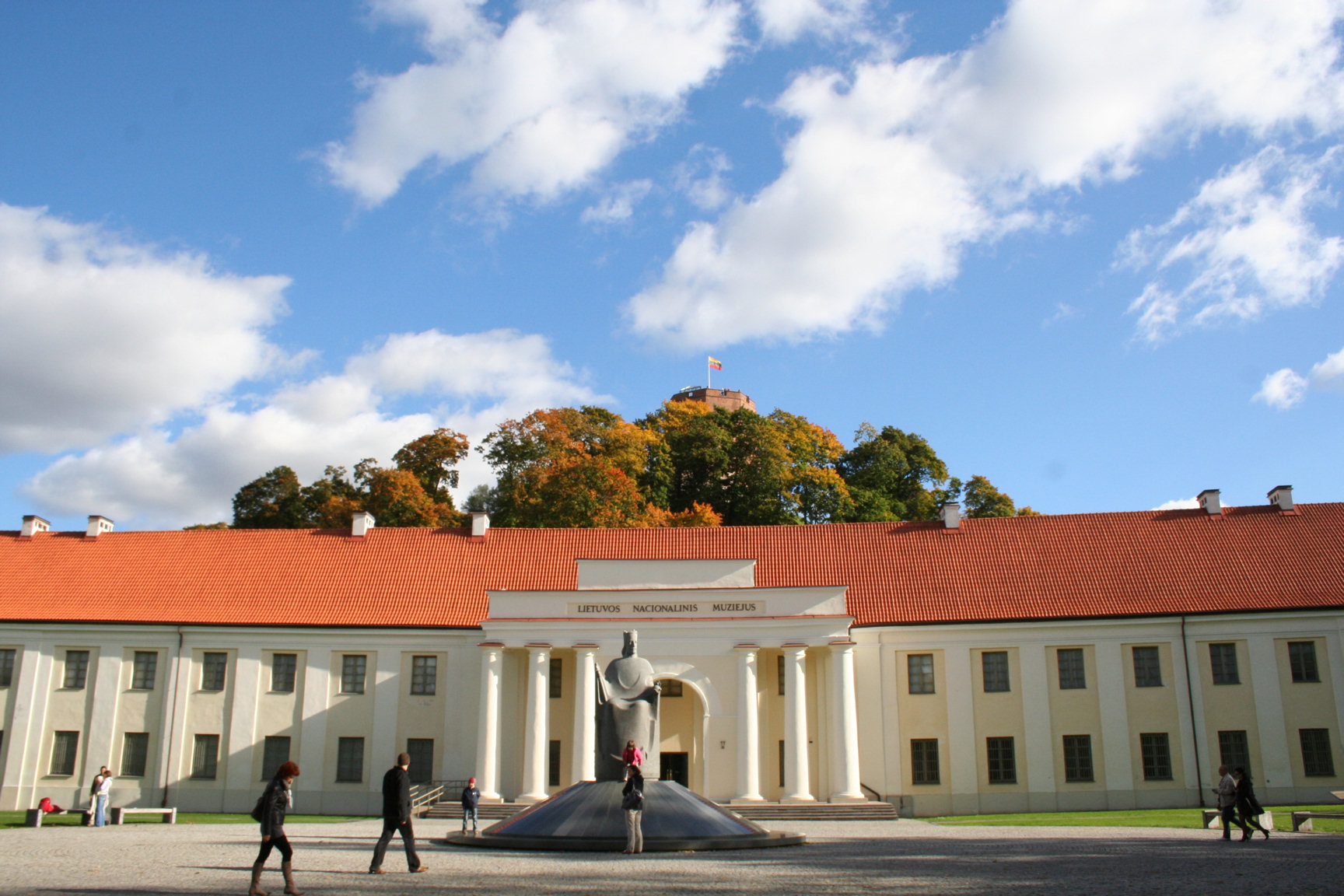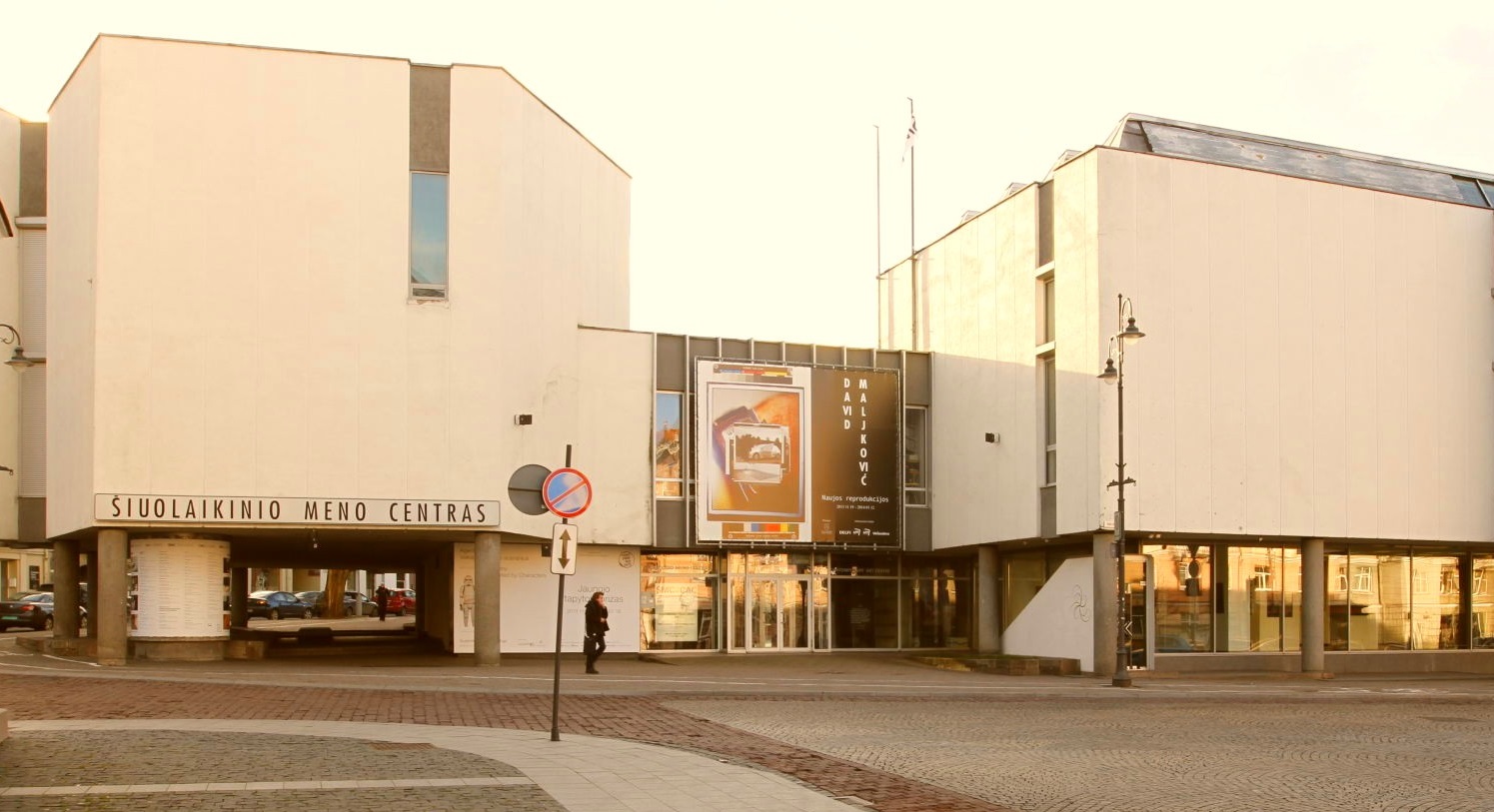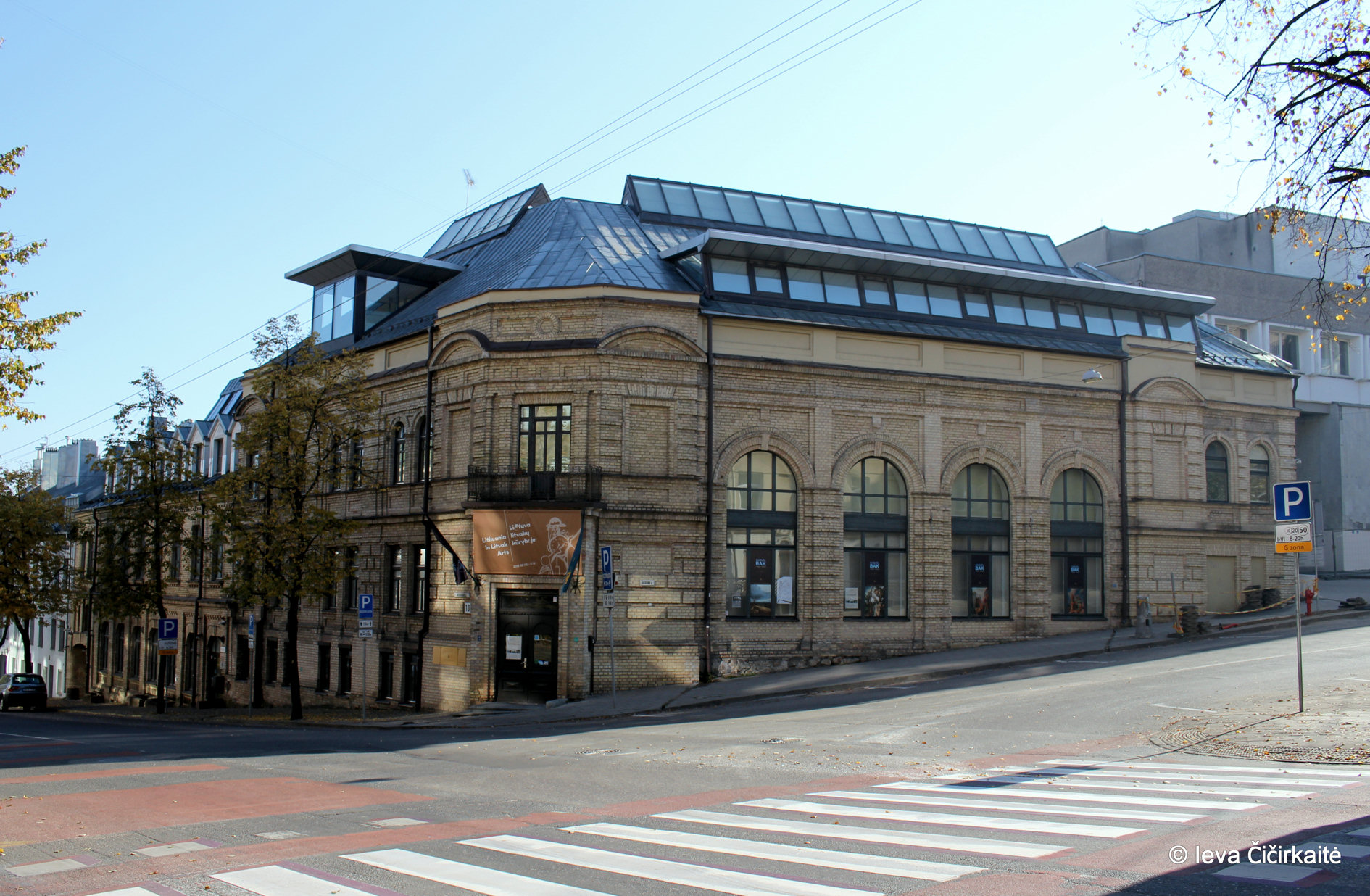You will find distances to the most interesting sights of Vilnius below:
100m Gates of Dawn
The Gates of Dawn is the only surviving city gate of Vilnius (built in 1503-1522 yr.) and one of the most important religious, historical and cultural monuments. The Chapel in the Gate of Dawn contains an icon of The Blessed Virgin Mary Mother of Mercy, said to have miraculous powers. Roman Catholic Church Popes visited the site in 1993 and 2018.
Address: Ausros Vartu str. 14
230m Hales market
In the 15th century, the site of the current marketplace was initially named the Horse Market. Later, in the 16 th century, it became known as the Grain Market, when, after the city wall was built, it found itself in the suburbs. In 1906, at the intersection of Pylimo and Bazilijonų Streets, a new market was erected, designed by Vilnius architect and engineer Vaclovas Michnevičius with help from local entrepreneur Petras Vileišis. This is the oldest marketplace still operating in Vilnius.
Address: Pylimo str. 58
650m Vilnius Town Hall
Vilnius Town Hall was first mentioned in historical sources in 1503. The Town Hall building was Gothic to begin with and later suffered from wars and fires. The Town Hall was reconstructed for the last time by the architect Laurynas Stuoka Gucevičius at the end of the 18th century. During that reconstruction, the Town Hall turned into a Classical building. Since 1995, it has been a center of attraction for cultural and public life, with concerts, exhibitions, creative evenings and nobility feasts.
Address: Didzioji str. 31
750m The Bastion of Vilnius City Wall
The Bastion was built in the 17th century. It was designed to use artillery fire to deter the enemy from the city. This is part of the Vilnius Defensive Wall, often called “barbican”. The Bastion is a Renaissance style fortification characterised by its original construction. It consists of a tower installed in the city defence wall, underground gun ports and a connecting corridor, which turns into a 48-metre long tunnel.
Address: Boksto str. 20
1,1km Vilnius University
One of the oldest universities in Central Europe, Vilnius University was founded in the 16th century while Europe – and of course Lithuania – was in the grips of the Protestant Reformation movement. Catholic monks, Jesuits, were called to stop the spread of the movement and were asked to take over education policy. In 1569 they established a college and just 10 years later, the University of Vilnius was born. Many distinguished historical figures have graduated from the university, including poet, intellectual, and Nobel laureate Czeslaw Milosz.
Address: Universiteto str. 3
1,1km Presidential Palace
From the 16th century it served as a residence for Vilnius bishops. In the 18th century, when Lithuania was occupied and annexed to the Russian Empire, the palace served as a residence for the Governor General of Vilnius. In 1997, the building was renovated. Presently, the President of Lithuania and his Chancellery occupy the building, and leaders of other countries are welcomed here. A flag displaying the coat of arms of the President is hoisted when the President is present in the Palace or in the city.
Address: S. Daukanto square 3
1,3km Church of St. Anne
St Anne’s Church, which has survived to the present day without changing for over 500 years, has become a symbol of Vilnius. At a closer look, one can see the letters A and M in the main facade of St Anne‘s. The letters A and M could stand for the Latin Ana Mater Maria or Ave Maria, i.e. „Saint Anne – Mother of Mary“ or „Hail Mary“. Some experts claim that the Pillars of Gediminas have been highlighted in the composition of the facade with the three towers of the church corresponding to the three pillars.
Address: Maironio str. 8
1,3km Cathedral Basilica
The Cathedral of St. Stanislav and St. Vladislav is the most important place of worship for Lithuania’s Catholics, and the venue for the country’s main Christian and national festivities. In 1922, the Cathedral was granted the title of ‘Basilica’, by Pope Pius XI. The exposition in the underground of the Cathedral reflects the history of the Cathedral from the time of King Mindaugas (13th c.) to its last reconstruction (18th c.). A 57-meter high belfry tower stands next to the cathedral and is open to visitors.
Address: Katedros square 2
1,3km Palace of the Grand Dukes of Lithuania
The reconstructed Palace of the Grand Dukes of Lithuania were originally constructed in the 15th century for the rulers of the Grand Duchy of Lithuania and the future Kings of Poland. The palace, located in the lower castle of Vilnius, evolved over the years and prospered during the 16th and mid-17th centuries. For four centuries the palace was the political, administrative and cultural centre of the Polish–Lithuanian Commonwealth. It was demolished in 1801, and then rebuilt in 2018. Currently, the palace houses one of the most impressive Lithuanian museums with over 0.5 M. archaeological, cultural, artistic, historical treasures and exhibits.
Address: Katedros square 4
1,3km Gediminas‘ tower of the Upper Castle
Gothic castle was built in the 14th c. however, it suffered from fires and wars until it was rebuilt in the 16th century. The exposition of Gediminas castle Museum opened in 1960 displays reconstruction models of Vilnius castles of the second part of the 14th and the beginning of the 17th centuries, armament, iconographic material of old Vilnius. An observation deck on the top of the tower is the best place from which to appreciate a magnificent panorama of Vilnius. The castle tower with the flag of Lithuania have become a symbol of the nation’s struggle for independence and statehood.
Address: Arsenalo str. 5
1,3km National Museum of Lithuania
The National Museum of Lithuania is the largest depository of Lithuanian historical cultural heritage in the country. It is the oldest museum in Lithuania, dating back to 1855, when the Museum of Antiquities was established in Vilnius. Authentic exhibits help to recall the history of Lithuania and its national culture and customs.
Address: Arsenalo str. 1
650m Contemporary Art Centre
The Contemporary Art Centre is the largest art center in the Baltic States. Retrospectives of well known local and world artists are held, however, the most important sphere of the activities of the Contemporary Art Centre is presentation of the latest international art tendencies. About 60 thousand people visit the events organized by the Contemporary Art Centre annually.
Address: Vokieciu str. 2
1km MO Museum of Modern Arts
Center for Modern and Contemporary Art – MO Museum was opened in 2018. A collection of Lithuanian modern and contemporary art from the 1960s to the present day is exhibited here. At present, it contains almost 4,500 works of painting, graphics, photography, sculpture, video art by artists recognized in Lithuania and abroad. The unique architecture building was designed by the international architectural studio – Libeskind.
Address: Pylimo str. 17
1km Vilna Gaon Jewish State Museum
It is a Lithuanian museum dedicated to the historical and cultural heritage of Lithuanian Jewry. The Vilna Gaon museum was established in 1989 by the Lithuanian Ministry of Culture. Over the years, its collection has been expanded to include objects from other museums in Lithuania. The museum was renamed in 1997 to commemorate the 200th anniversary of the death of the Talmudic scholar Vilna Gaon.
Address: Naugarduko str. 10
2,2km Museum of Occupations and Freedom Fights (KGB Museum)
The Museum of Genocide Victims is arguably the darkest in Vilnius. Its bloody history began when this former gymnasium became the headquarters of the Gestapo during the Nazi occupation of Lithuania in 1941. It was then reoccupied by the Soviet Secret Police – the KGB – when the Nazis left in 1944. The KGB stayed until 1991 when Lithuania became independent from the Soviet Union. Visitors can view the prison-interrogation isolator and the exposition set up in the former death sentence enforcement room.
Address: Auku str. 2A
